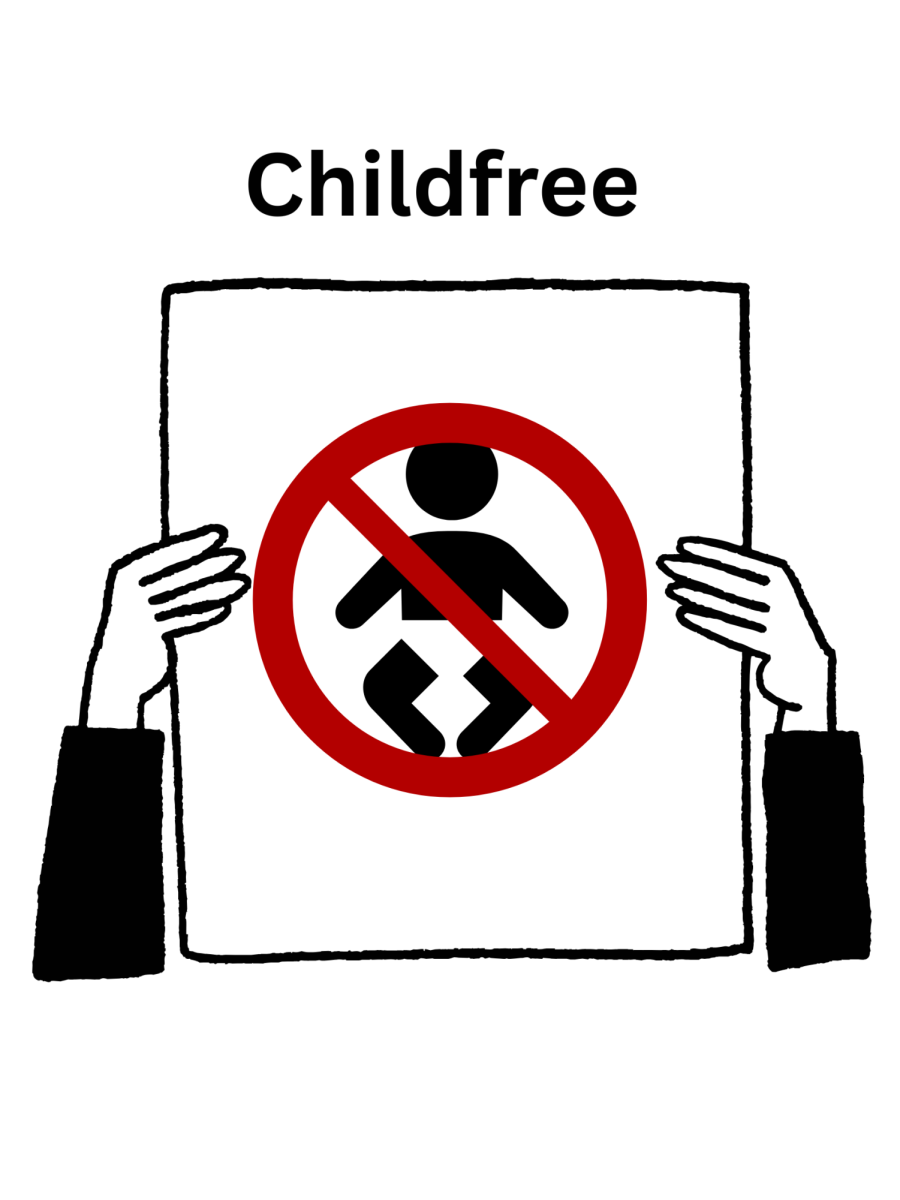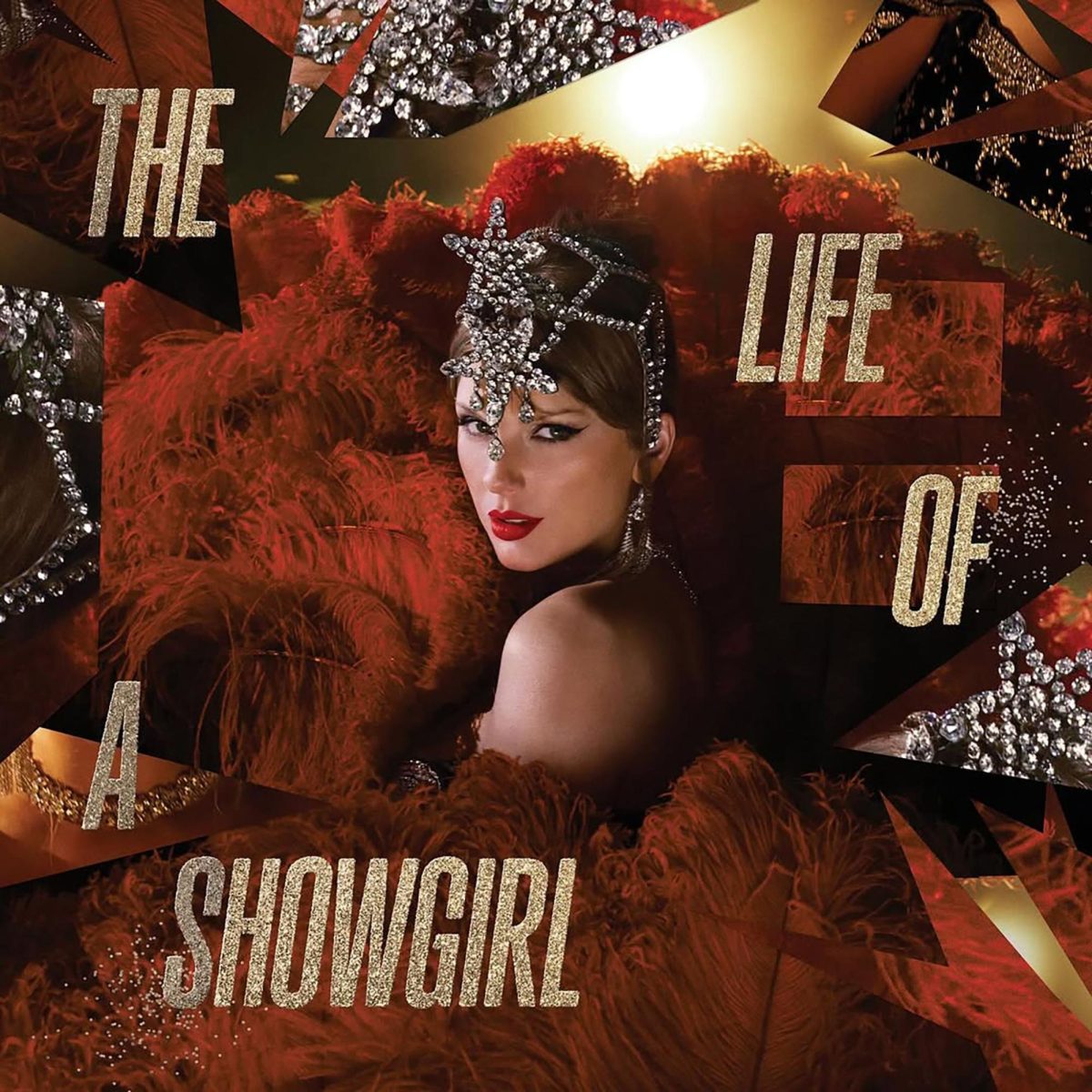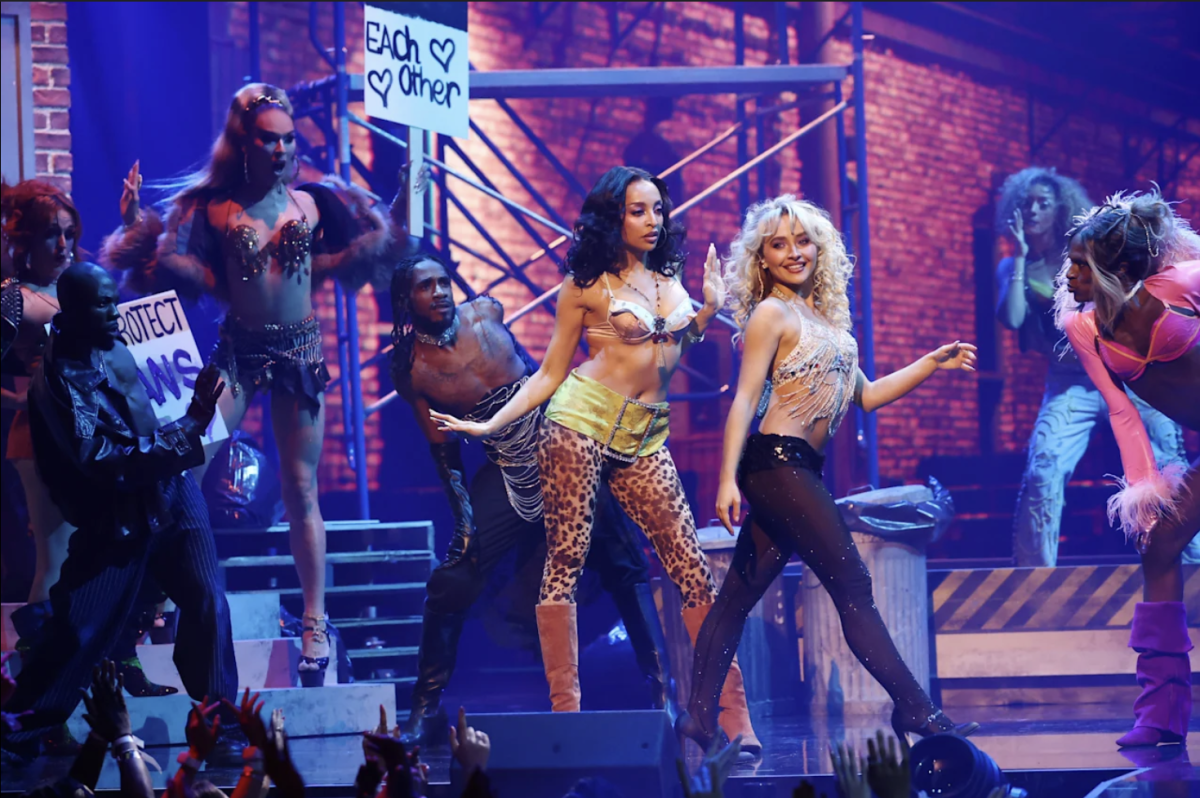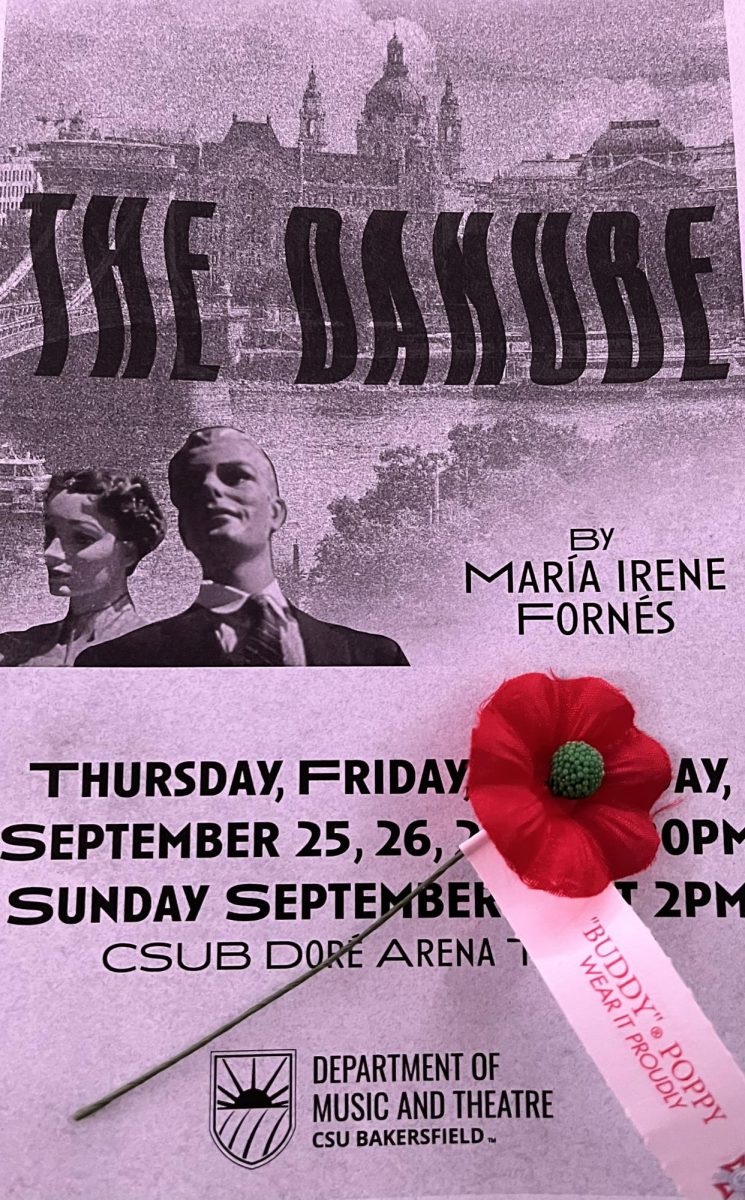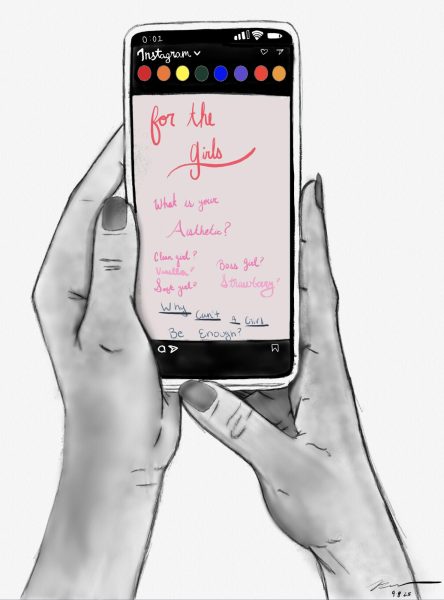
Scrolling on TikTok has quickly become something for the “girls.” That is, the vanilla girls, strawberry girls, coastal cowgirls, and all the other hyper-focused trends catering to the “girls.”
These trends provide different aesthetics to achieve a certain tone of “girl,” with a distinct code for each one. Influencers have it down with these trends, providing you with style guides, accessory needs, and the inside scoop on achieving said aesthetic.
At first glance, these trends for the “girls” are seemingly adorable and fun to participate in. The deeper issue lies between what you’re shown versus what’s going on behind the scenes.
Being a girl is enough, and the “girl” trends are just an outlet to feel like you belong.
“The rise of these aesthetic videos stem from younger people’s need… to feel some form of worth and belonging,” says Kaetlyn Liddy in “What to make of TikTok’s ‘strawberry girl’ and ‘tomato girl’ Trends” from NBC News.
We’re constantly trying to fit in with the status quo, but if we can’t fit in, we try to make ourselves fit in with a select group of people.
There is a need to make ourselves feel close to others, to the point that we have created microtrends based on our similarities.
These “girl” trends reinforce that message. However, as a girl, we should have the freedom to just be.
“I feel like its toxic. It makes women feel like losers. You feel like, ‘Oh, I have to wake up, drink bone broth, go to classes at seven in the morning, be perfectly sober, do all these things to fit the system,’” said Laura Andraschko for Women Wear Daily Magazine article “Laura Andraschko is designing for the Anti-clean Girl by Violet Gladstone.”
We need to stop creating new “girl” trends and allow girls to have many interests and aesthetics without the pressure to fit in with those around them.
Breaking the false reality of what we’re being shown.
“To have this clean girl aesthetic it’s not just about the makeup but the canvas underneath. Meaning there is no acne, no texture on the face, no hyperpigmentation,” said NIYA Beauty App on TikTok.
It is normal to have acne, it is normal to have wrinkles, and I hate to offend anyone, but it is even normal to have facial hair such as a mustache or unibrow as a girl.
These “girl” aesthetics don’t indeed capture all types of girls. Instead, they show you what their opinion of a “girl” is. There is an underlying issue if we think that those with acne, vitiligo, or a mustache are any less “clean” than those without.
Furthermore, let’s be honest: not everyone can have a clean desk 24/7, no one has a skinny perfect body while working out, and many girls who are drinking bone broth definitely don’t enjoy it.
Reena Lucas, @Reena.Lucas on TikTok, a lifestyle creator and your self-care bestie, shows viewers what goes on behind the scenes of the “that girl” aesthetic.
Lucas shows that the coffee video that looks effortless was a mess before the final shot and that her “perfect” makeup desk had to be cleaned up before she filmed.
The influencer’s final shot is, of course, going to be posed and perfect for the camera. On top of that, even the imperfectly perfect videos are still seemingly flawless.
We have to be conscious when it comes to scrolling on social media and remind ourselves that these “girl” trends aren’t necessarily reality but a curated and camera-perfect lifestyle.
“Girl” trends make you justify money or spend more money to achieve a certain look.
Anything under $5.00 is free. If I make a return, I just made money. If I pay for something in advance, it’s free…that is girl math.
Now, can we be honest, it actually makes sense, and I find myself thinking the same way. But something that seems comical might be unintentionally harmful.
One of the top-liked videos on TikTok regarding girl math is by McKenna Otterstedt, @mckennaaelinna on TikTok. Her pinned video on girl math went viral and has over 2.3 million views.
“Here is a list of things that I firmly believe because of girl math… going to an event or concert is free because I purchased the tickets so long ago it doesn’t count…I load my Starbucks app in advance, so Starbucks is free… if I don’t buy something for $50, I have made $50…” said Otterstedt. She goes on to explain her mathematical justifications as a girl.
The comment section is filled with agreements, even one from one account that said, “where’s the lie.”
Now, while I believe a ton of the videos on girl math are satire, the problem is that at the end of the day it is still money.
When you’re looking at things through social media, you don’t get the background information on the privilege the creators have when it comes to money, how much money they make, or even an inside look into their bank accounts.
As someone who has money anxiety, works as a student and is already in credit card debt at the age of 21, girl math can cause me to go into a money spiral.
Another aspect of these “girl” trends is how they influence you to spend money.
The “clean girl” trend is all about clean eating, and being healthy, and places a high importance on pure beauty.
“An essential part of achieving the vibe is putting together an effortless, glowy, sophisticated beauty look,” said Samantha Olsen in her article for Seventeen Magazine, “Here’s a rundown on the clean girl aesthetic that’s dominating TikTok RN.”
Shortly after Olsen explains what the trend means, there are links to purchase items that can make you achieve the “clean girl” look.
The concern is that when you’re scrolling on social media, we see so many ads that we can’t even tell when things are ads nowadays.
Social media influencers are geniuses when it comes to promoting products in seamless way, and they can make you feel like you have to buy something to fit in with the trend.
Let’s face it: while some products are amazing, you may also have things that you already use that are just as good. By seeing a style guide, you can subconsciously justify spending money on a similar product you probably already have.
Most “girl” trends are for white women.
Another major issue with these trends is how only white, cisgender women seem to be the ideal ‘girls.’
If you don’t believe me, look up any “girl” trend and see if you see any people of color within the first ten videos. As someone who did this myself, I had to search pretty hard to find someone who was African American.
“Clicking through to the videos, I watch with a stream of thin, photogenic, predominantly white women…” said Priyankaa Joshi in Stylist Magazine article “I tried to become TikTok’s that Girl for a week- here’s how it affected my mental health.”
These “girl” trends reinforce the standard of what society deems beautiful: perfect skin, skinny bodies, and a seemingly effortless, yet sophisticated, lifestyle.
With these trends that we see, it can be harmful to create a narrative that to be a trendy girl, you have to look like the white girls portraying this message.
Diversity is essential when talking about what it means to be a girl, and I mean just a girl. Conversations around beauty standards, conformity, race, and even self-expression are essential. While these “girl” trends make you feel like you may fit in more, you’re not meant to fit of “one size fits all.”
So, remember, next time a “girl” trend pops up on you for you page, remember that influencers are showing us what we want to see.
You don’t have to be a “hot girl” and go on your hot girl walks; you can simply be a girl who likes to walk. You don’t have to be a “clean girl” because you want to be more organized; you can simply be a girl who wants a more organized life.
You see, simply being a girl, is the best part of who you are. It doesn’t matter what you look like, it doesn’t matter how you express yourself: you are who you are.
While these trends can be a fun inside secret, and the girls who “get it get it,” we have to remember that these trends can simultaneously create false realities and have yourself trying to fit in with the people influencers, who are behind the “girl” trends.
I think it’s time we stop the comparison games, stop trying to squeeze in to fit in an area, and stop being influenced to be anything other than just a “girl.”



